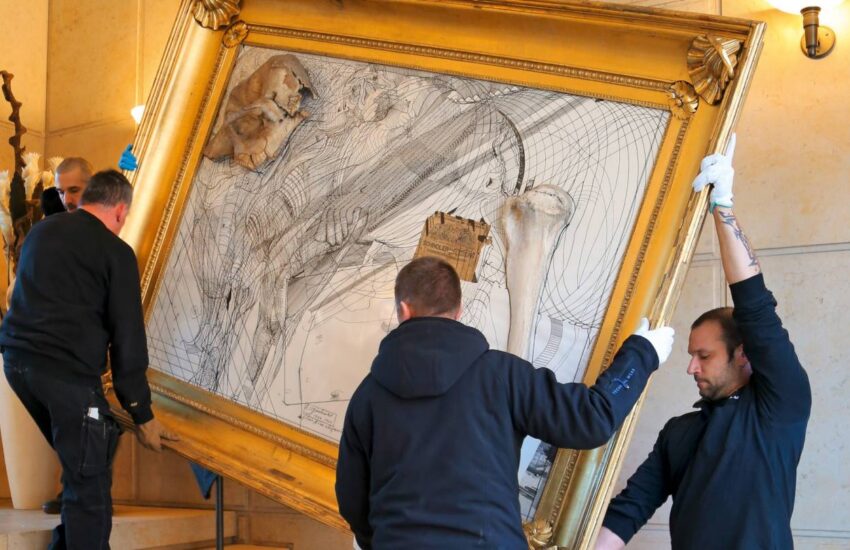Last year, I stumbled upon an estate sale that left me both inspired and heartbroken. The collector had amassed an incredible array of artwork, but here’s the kicker: none of it was properly insured. When a pipe burst in their storage room, water damage ruined several pieces. The financial loss was staggering and completely avoidable. That experience was a wake-up call for me. It made me realize just how important specialized fine art insurance is, especially when standard homeowners policies fall so painfully short.
Why Your Homeowners Insurance Isn’t Enough for Art
Let’s be real: many of us assume our homeowners insurance has our backs when it comes to protecting our valuables. But when it comes to art, that assumption can lead to disaster. Most standard policies cap coverage for high-value items at around $1,000 to $2,500 per piece. That might sound okay for your couch, but for art? Not even close. And it gets worse. These policies often only cover specific types of damage, like fire or theft, and even then, they’re full of loopholes.
When I started building my own collection, I had a chat with my insurance agent. She broke it down for me: standard policies won’t cover accidental damage, like if you accidentally knock over a sculpture. They don’t account for appreciation in value, so you’re stuck with the purchase price, not the current market value. And forget about coverage during transit or while your art is on loan to a gallery. It’s a minefield of “what-ifs.”
What Makes Fine Art Insurance Different?
This is where specialized fine art insurance comes in. Unlike your run-of-the-mill homeowners policy, these plans are designed specifically for art collectors. They offer something called “all-risk coverage,” which basically means your art is protected against almost any kind of damage or loss, unless it’s explicitly excluded. And here’s the best part: they compensate you based on the current market value, not what you paid for it years ago.
One feature I absolutely love is scheduled coverage. This is where you list each piece individually, along with its appraised value. It’s like creating a safety net for your collection. If something happens, there’s no haggling over how much your art is worth—it’s all agreed upon upfront. Plus, these policies often include worldwide coverage, so your art is protected whether it’s hanging in your living room, being shipped across the globe, or on display at an exhibition.
How to Figure Out What Coverage You Need

Getting the right coverage starts with good documentation. I learned this the hard way when a small painting of mine got damaged during a home renovation. Thankfully, I had all my ducks in a row: provenance records, certificates of authenticity, high-res photos, purchase receipts, and professional appraisals. These documents made the claims process so much smoother.
Speaking of appraisals, they’re a must. Art markets can be unpredictable, so it’s a good idea to get your collection reappraised every three to five years. This ensures your coverage keeps pace with the value of your pieces. Trust me, it’s worth the effort.
Beyond Insurance: Protecting Your Art Day-to-Day
Insurance is crucial, but it’s not the only way to protect your collection. Environmental factors like humidity, temperature changes, and light exposure can wreak havoc on your art over time. I’ve started taking some simple precautions, like using UV-filtering glass and keeping my pieces away from direct sunlight and water sources. It’s not museum-level climate control, but it helps.
Is Fine Art Insurance Worth the Cost?
Let’s talk numbers. Yes, specialized fine art insurance costs more than your standard homeowners policy. But when you consider the potential losses, it’s a no-brainer. Premiums vary depending on the value of your collection, your location, and your security measures, but the peace of mind it brings is priceless. Plus, many insurers offer discounts if you bundle policies with them.
At the end of the day, fine art insurance isn’t just about protecting your investment it’s about protecting your passion. It lets you enjoy your collection without constantly worrying about the “what-ifs.” And for me, that’s worth every penny.
References
American Institute for Conservation. “Guidelines for Care of Art Collections.”
Insurance Information Institute. “Insuring Valuables and Collectibles.”
International Foundation for Art Research. “Art Loss Registry and Insurance Coverage.”

